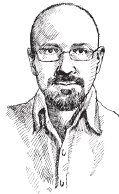
After years of dreaming and years of hard work, Jo was going to be a published author. She still almost couldn’t believe it. Then one evening, about a month later, she got more exciting news: Christopher Little told her that in the United States the book was being sold in an auction.
Jo was confused. Wasn’t an auction just for paintings or jewelry or expensive pieces of furniture? At auctions, people called out prices that they were willing to pay for things. These offers were called bids. How could anyone be bidding on her story?
Mr. Little explained that there were publishers in America that were interested in Harry Potter— very interested. So interested that they were competing with one another to buy it, each publisher trying to top the others’ bids. Just like in the auctions Jo knew. “The price is up to five figures,” he said. That meant over $10,000. Two hours later Mr. Little called back. The price was now up to six figures. That meant Jo’s book would be sold for over $100,000.

ARTHUR A. LEVINE
The winner was Arthur A. Levine of Scholastic. He was a little scared about spending so much money on a first-time author. But he loved the book so much. He thought kids in America would, too. His favorite thing about Harry Potter was “the idea of growing up unappreciated, feeling outcast, and then this great satisfaction of being discovered.”
Jo understood the feeling of being discovered. With her newfound wealth she bought a new jacket. It was strange for Jo to be able to spend money on herself and not worry about it.
In June 1997, Harry Potter and the Philosopher’s Stone by J. K. Rowling was published in the United Kingdom. Bloomsbury had asked Jo if they could use her initials instead of her name on the book. They were worried that boys might not want to read the book if it was written by a woman! Jo didn’t have a middle name, so she gave herself one: Kathleen, after her grandmother. That’s where the K in J. K. comes from.
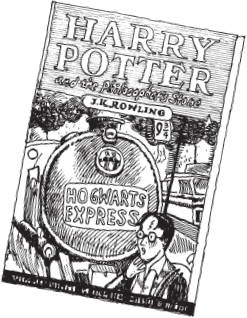
Bloomsbury didn’t keep the secret of her being a woman for long. Harry Potter and the Philosopher’s Stone was a big hit. Jo’s own daughter, Jessica, was only four—too young to read the book—but other children loved it. Jo was voted the winner of the Smarties Book Prize by schoolchildren all over the United Kingdom. They couldn’t wait to read her second book, which Jo had already finished: Harry Potter and the Chamber of Secrets. It was published in July 1998.
Jo was also becoming famous in America, where her book was called Harry Potter and the Sorcerer’s Stone. Scholastic changed the title so everyone would know that the book had magic in it.
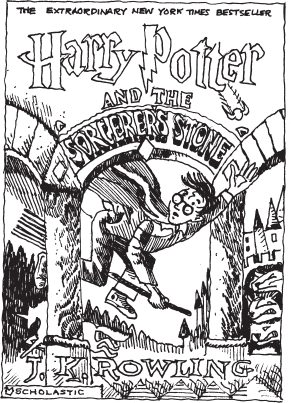
Americans and British people both speak English. But there are a lot of differences in the ways they speak it. For American kids, some changes were made in the Harry Potter books including Scotch Tape for Sellotape, parking lot for car park, and bag of chips for packet of crisps. This kind of “Americanizing” is done in many US editions of books that were first published in the United Kingdom.
In October 1998, Jo traveled to the United States for the first time for a ten-day book tour. At first Jo was worried that American children wouldn’t like her book as much as children in the United Kingdom did. But she was wrong. “When I did public readings,” she told The Scotsman newspaper, “they even all laughed in the same places as British youngsters.”
Jo was surprised that many of the children she met had already read Harry Potter and the Chamber of Secrets. The book wasn’t even published in the United States yet. They had ordered the book from England on the Internet because they couldn’t wait.
Jo was more successful than she had ever dreamed—but things were just getting started. In the publishing world, no children’s books had ever been as popular as the Harry Potter books. Each book landed on the New York Times Best Seller list and stayed there for so long that the newspaper started running a separate list for children’s literature. Even popular children’s book writers like Dr. Seuss (The Cat in the Hat), R. L. Stine (Goosebumps), and C. S. Lewis (The Chronicles of Narnia) did not sell as many books.
By the time she returned to the United States to promote her third book, Harry Potter and the Prisoner of Azkaban, Jo was met by, not just children, but crowds of adults. Why were so many adults reading a book written for children? It’s because a really good story appeals to people of all ages. The press called it Pottermania. It meant that everyone was going crazy for Harry Potter. Jo’s life had changed beyond her wildest dreams. She traveled around the world and stayed in the best hotels. She could buy clothes made by famous fashion designers. Once, while going to a movie premiere, she wore a pair of gold shoes. They had six-inch heels and cost one thousand dollars.
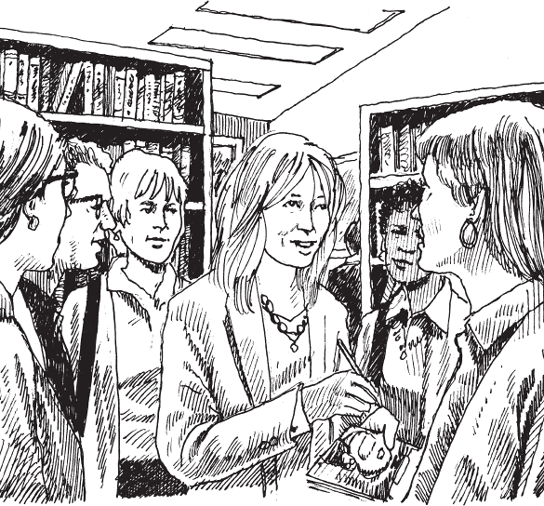

What was happening to Jo was a little bit like what happens to Harry when he first arrives at Hogwarts. He is surprised to learn he is famous. People he doesn’t know want to be his friend. Harry often finds his name in the newspapers. Now Jo was in the papers, too—and on the radio and on TV. Reporters even showed up at her house. Perhaps some of the reporters she met influenced the way Jo wrote Rita Skeeter, a devious reporter who makes up stories about Harry.
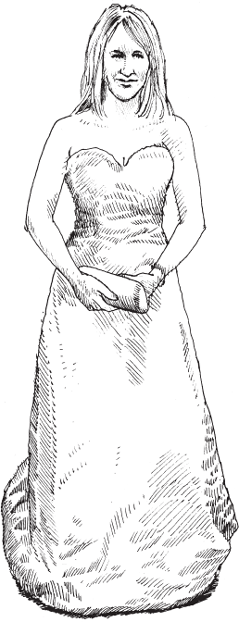
Jo did not know that being an author would be like this. In an article in the Independent newspaper, she said, “I imagined being a famous writer would be like being Jane Austen, being able to sit at home in the parsonage and your books would be very famous. I never dreamed it would impact my daughter’s life negatively, which at times it has.”

Jessica was now seven years old, and she still had never read any of her mother’s books. Jo thought the Harry Potter books were for readers who were at least eight years old. But Jessica could not stand being the only person at school who had never read them. So Jo read them to her—and she loved them.
Jessica did not love having strangers snap her picture without asking if they could. Neither did her mother. On a vacation in the Galapagos Islands, a photographer took pictures of Jo in a bikini. Jo didn’t like that, either.
Everyone wanted to know all about the Rowling family: Jo, Jessica, and Jo’s new boyfriend, Dr. Neil Murray. A friend introduced Jo to Neil in 2000. With his dark hair and glasses, Neil looked like a grown-up Harry Potter. When he and Jo started dating, the press began snapping pictures of him, too. Jo and Neil were planning a life together with Jessica. In 2001, they bought a nineteenth-century mansion on the banks of the River Tay in Scotland. Besides having a morning room, a drawing room, and 162 acres of land, the house was close to Castle Menzies. Castle Menzies is about five hundred years old. Many people think it looks a lot like Hogwarts.


Jo loved her new life, but sometimes being famous was hard. Jo was by nature very private, and it was scary to feel like she was being spied on. She had never planned on being famous. In an interview, she said, “I never wanted it and I never expected it and certainly never worked for it, and I see it as something I have to get through really.”
Pottermania was getting bigger and bigger. It was only a matter of time before Hollywood got in on the game.